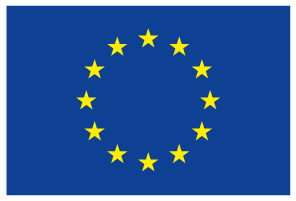Germany
2013
- Type : Project
- Size : Regional
- Area : Residential, Utility
Environmental benefit
Zero-emission Settlement in Bad Aibling
Share
Germany
2013
- Type : Project
- Size : Regional
- Area : Residential, Utility
Environmental benefit
Discover this use case online
On the former US-army military complex in the Bavarian town of Mietraching/Bad Aibling , a
zero-emission settlement is created. The settlement includes refurbished military buildings as well as new buildings in wood construction. In total of about 770 households, offices and public buildings are supplied with heat by the small district heating grid. Core technology of the installation is a woodchip boiler house, designed by the architect Matteo Thun from South Tyrol, Italy. The boiler house is designed in the style of the St.-Veit-chapel in South-Tyrol, so that it can be hardly recognized as technical facility and resembles more as a church or monument. The area of the whole settlement is about 70 ha and includes areas for living, leisure and work. The settlement also includes a hotel, restaurants, schools and a kindergarten.
The small district heating grid is supplied by decentral heat sources. The base-load is supplied by the woodchip boiler (500 kWth), especially in the cold season. Solar collectors of about 2,000 m2 contribute to the heat supply on sunny days. This solar energy is stored in several small, decentralized buffer tanks and a central buffer tank. A gas-fired peak load boiler is used at peak demand in winter. The flow temperature of the heating grid depends on the operation of these three heating sources: woodchips, solar and gas. If the flow temperature in summer is low as the system is only supplied by solar thermal energy, heat pumps raise the temperature for the hot water supply to a higher level. The heat source for the heat pumps is used from the small district heating grid and increases the overall efficiency.
The locally produced wood chips are dry premium woodchips which were dried to 15 % water content with the waste heat of a nearby biogas plant. The woodchip logistics include a container system where the container acts as feeding-unit for the boiler. This minimizes noise and dust nuisances. During the change of the containers, the woodchip boilers are supplied by wood pellets in order to guarantee a continuous operation. In addition to the heat supply, photovoltaic systems, which feed electricity into the power grid, are installed. Thus, the overall calculated energy balance of the settlement is positive. The PV system produces more electricity than what the heat installations, including the heat pumps, need.
 R-ACES has received funding from the European Union’s Horizon 2020 research and innovation programme under grant agreement N° 892429
R-ACES has received funding from the European Union’s Horizon 2020 research and innovation programme under grant agreement N° 892429
On the former US-army military complex in the Bavarian town of Mietraching/Bad Aibling , a
zero-emission settlement is created. The settlement includes refurbished military buildings as well as new buildings in wood construction. In total of about 770 households, offices and public buildings are supplied with heat by the small district heating grid. Core technology of the installation is a woodchip boiler house, designed by the architect Matteo Thun from South Tyrol, Italy. The boiler house is designed in the style of the St.-Veit-chapel in South-Tyrol, so that it can be hardly recognized as technical facility and resembles more as a church or monument. The area of the whole settlement is about 70 ha and includes areas for living, leisure and work. The settlement also includes a hotel, restaurants, schools and a kindergarten.
The small district heating grid is supplied by decentral heat sources. The base-load is supplied by the woodchip boiler (500 kWth), especially in the cold season. Solar collectors of about 2,000 m2 contribute to the heat supply on sunny days. This solar energy is stored in several small, decentralized buffer tanks and a central buffer tank. A gas-fired peak load boiler is used at peak demand in winter. The flow temperature of the heating grid depends on the operation of these three heating sources: woodchips, solar and gas. If the flow temperature in summer is low as the system is only supplied by solar thermal energy, heat pumps raise the temperature for the hot water supply to a higher level. The heat source for the heat pumps is used from the small district heating grid and increases the overall efficiency.
The locally produced wood chips are dry premium woodchips which were dried to 15 % water content with the waste heat of a nearby biogas plant. The woodchip logistics include a container system where the container acts as feeding-unit for the boiler. This minimizes noise and dust nuisances. During the change of the containers, the woodchip boilers are supplied by wood pellets in order to guarantee a continuous operation. In addition to the heat supply, photovoltaic systems, which feed electricity into the power grid, are installed. Thus, the overall calculated energy balance of the settlement is positive. The PV system produces more electricity than what the heat installations, including the heat pumps, need.
